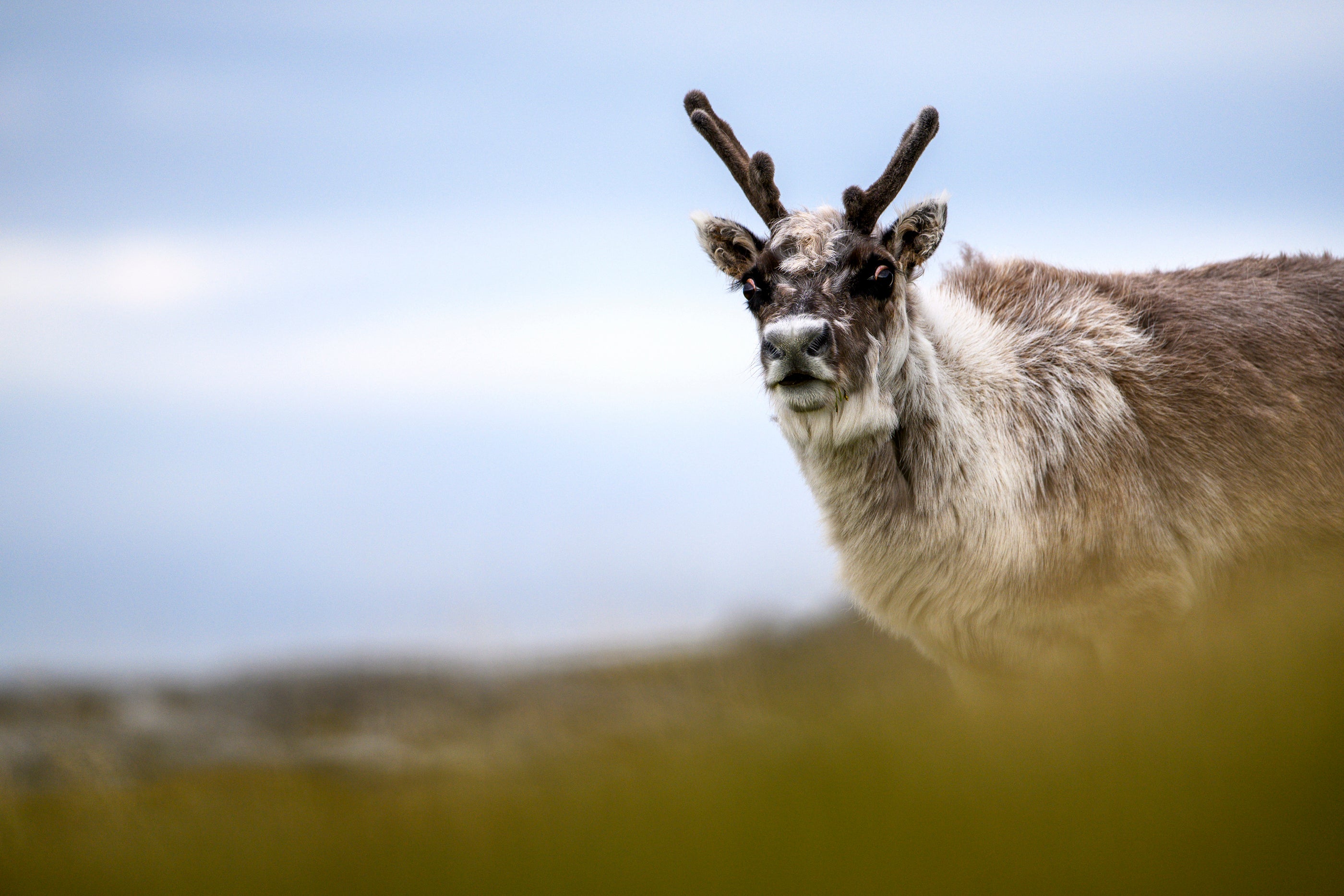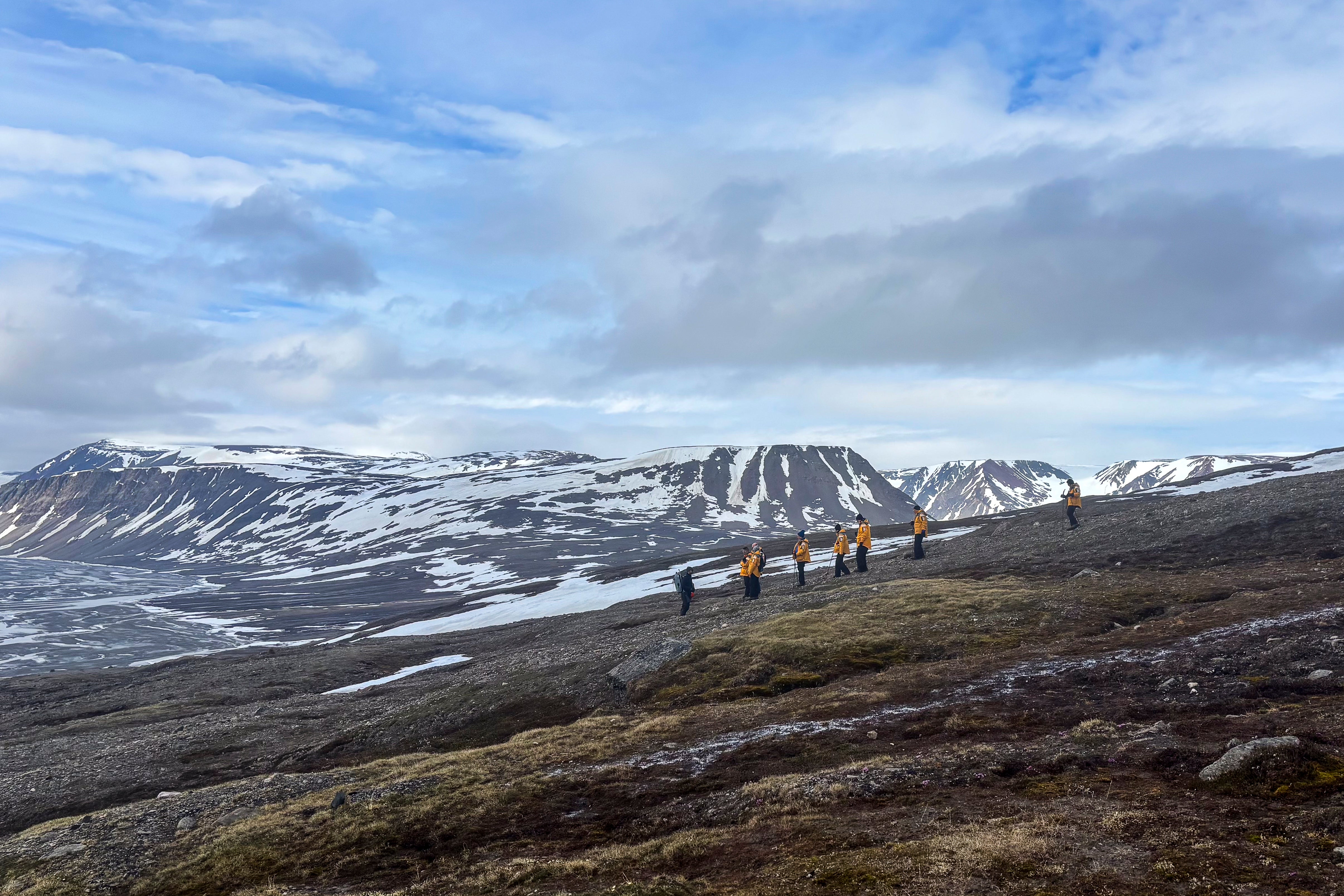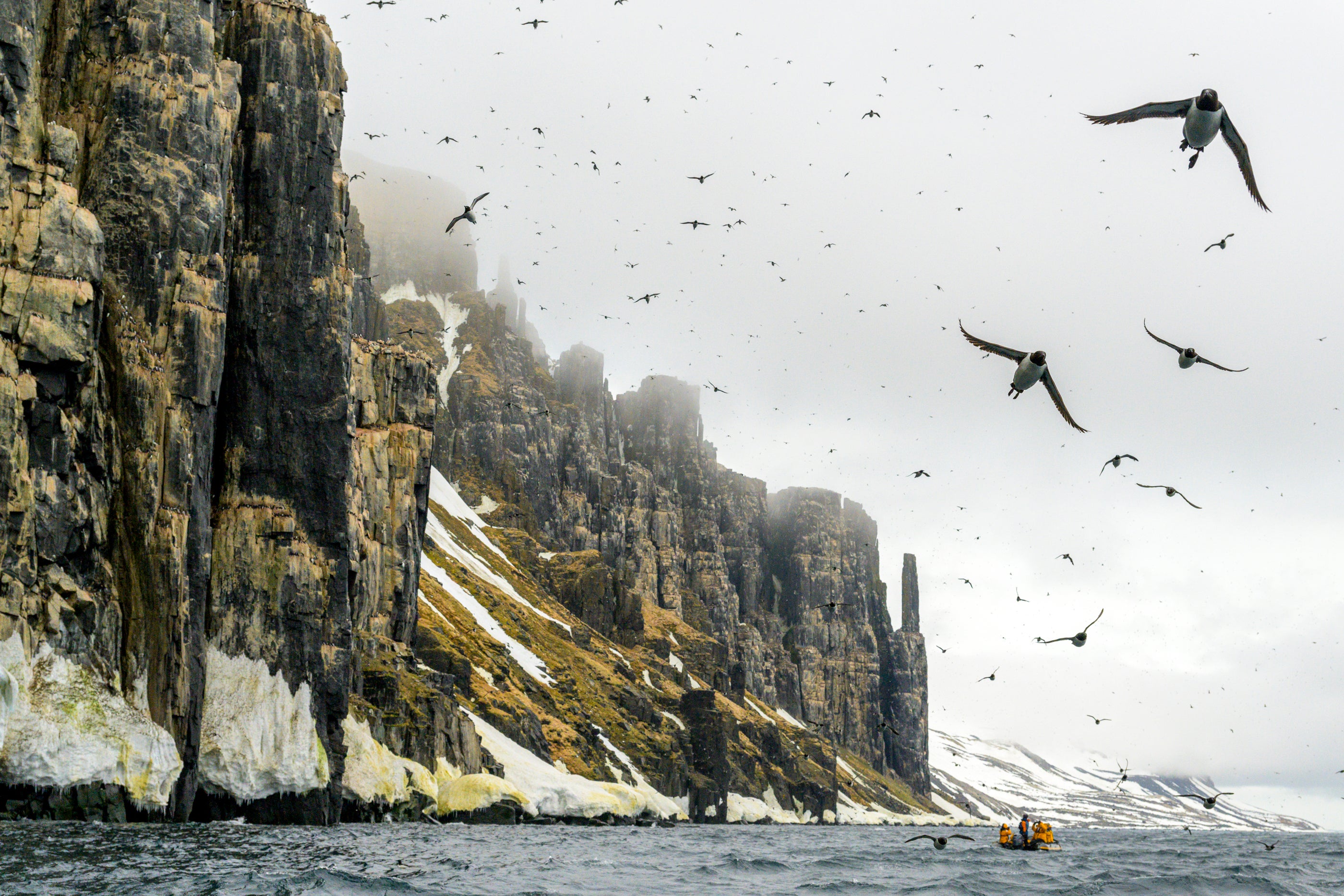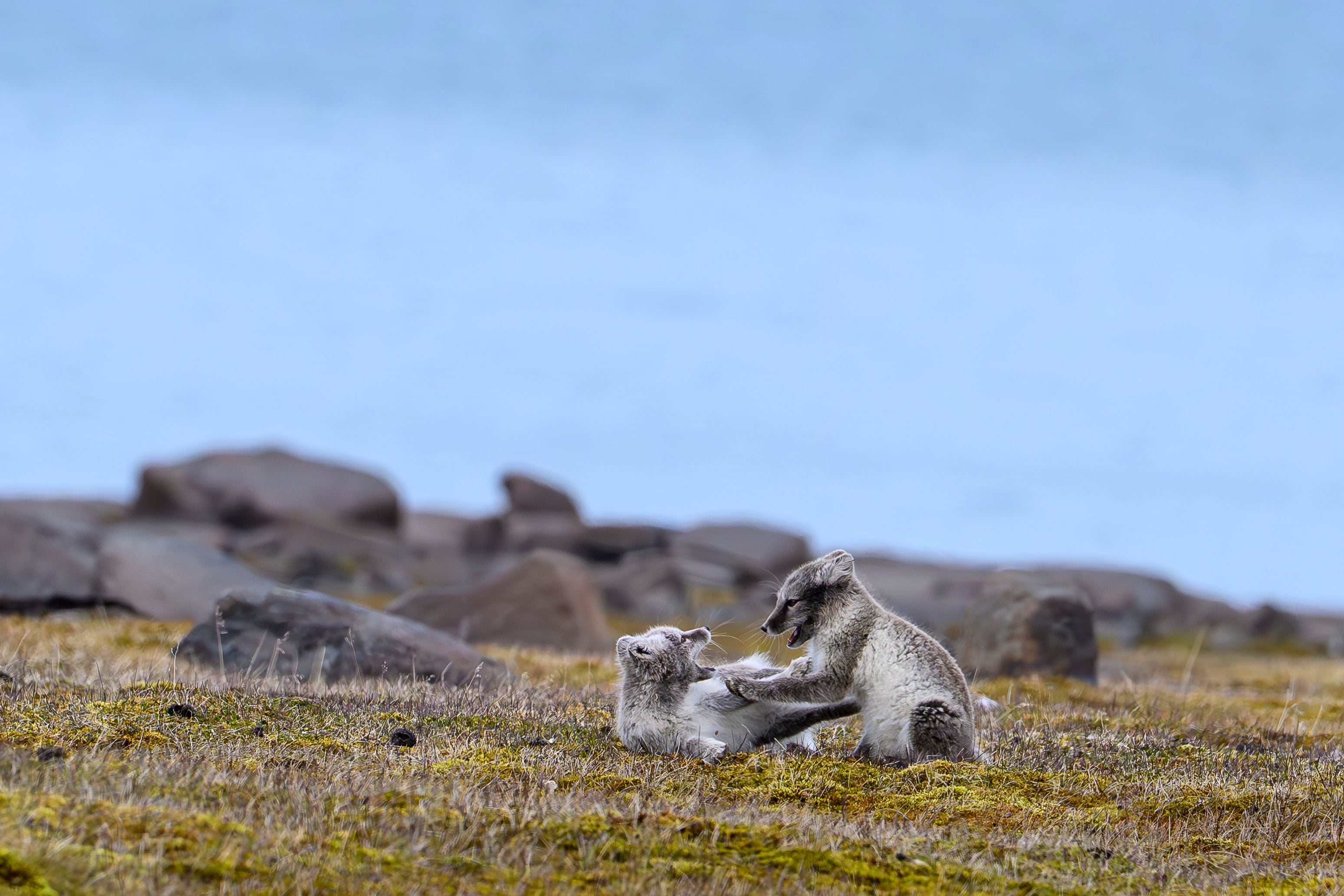A brilliant-white creature, camouflaged by snow, rests on a solitary slab of ice in the Arctic Ocean, sparkling under the polar summer sun.
This majestic bird, the ivory gull, is a poignant symbol of an environment disappearing due to uncomfortably warm temperatures in the far north.
Weighing around 500g, it is approximately 600 times smaller than Svalbard’s most famous resident, the polar bear.
Yet, contrary to widespread belief, the polar bear is not the sole monarch of the Arctic. Far fewer in number and considerably rarer, the brilliant-white ivory gull could easily claim that crown, its existence intrinsically linked to the vanishing ice.
The bird, which lives at high latitudes for its entire lifespan – even in 24 hours of darkness, is one of the species I’ve been searching for on a circumnavigation of Svalbard with leading polar expedition cruise experts Quark.
Admittedly, these angelic white birds are rarely far from the hulking fluffy white bears that have historically brought people to these regions – from hunters and trappers, through to tourists and photographers. Scavenging for scraps, they keep a close eye on the apex predators’ moves.
When I first visited Norwegian-governed Svalbard more than a decade ago, it was a very different place; there were less (and smaller) cruise ships navigating waters, and more ice.
New regulations have been introduced to cope with the growing pressures of over-tourism and climate change, taking effect from January this year. The biggest change is the introduction of minimum distances for viewing bears – 500metres (from March 1 to June 30) and 300metres (from July 1 to February 28).
Inevitably, there are grumblings and concerns about rules that reduce most bear encounters to viewings of a blob no bigger than a Rice Krispie through a supersized scope. But companies like Quark are determined to work within the new parameters and still deliver an excellent experience, proving there is so much more to Svalbard than painstakingly hunting for bears.
During mid-summer, when the sun never sinks, it’s possible to move around the entire Arctic archipelago reached by a one-hour and 40-minute flight from Tromso into former coal mining settlement turned tourist hub, Longyearbyen – (or, in my case, a three-hour charter flight from Helsinki).

Our first excursion had been a hike across the tundra at Camp Zoe, on the western coast of main island Spitsbergen. Surrounded by the area’s trademark spiky peaks, we walked across spongey soils, stopping to look at clusters of purple saxifrage as delicate as millefiori glasswork and sniffing the rose-like scent of moss campion. Tiny waterfalls trickled and snow bunting whistled, signalling the surprising variety of life at these extremes.
A second hike in Buchananhalvoya, the following day, introduced us to forests of polar willow – the biggest ‘tree’ in Svalbard, standing at only 8cm tall. “They say, if you’re lost in the forests of Iceland, just stand up,” quipped expedition guide Kelly. “If you’re lost in a forest in Svalbard, just open your eyes.”
Along our trail, pawprints the size of dinner plates reminded us bears can be anywhere, explaining why all hikes are led by guides with rifles, and landings are only ever made if a site has been carefully scouted and deemed clear.
As part of the new regulations, landings have been limited to 43 designated sites and only ships with a maximum of 200 passengers can enter protected areas. Carrying less than that number, our ship, the Ultramarine, was perfectly suited to explore the best spots.
The ideal way to view bears is – and always has been – from a ship, in ice.
Beyond Svalbard’s 12-nautical-mile protection zone, there are no set restrictions on viewing distances. During the summer months, this is where the remaining pack ice can be found.

Heading to 81 degrees north, the furthest north Ultramarine has ever travelled, we enter the Arctic’s frozen kingdom. A mosaic of shattered slabs drifts around us like pieces in an ever-shifting jigsaw puzzle. It isn’t long before we sight two male bears playing and rolling in the snow, taking dips in sapphire-blue patches of water to cool off from the blazing sun.
Watching wildlife is a game of patience. After several hours, a curious bear approaches our vessel, sniffing the air with his coal-black nose, until he is only metres from the bow. Dwarfed by the expanse of a frosted realm stretching into infinity, it’s the iconic image of an animal at the frontline of climate change.
In extreme environments, weather dictates everything. Much of expedition leader Sarah Zaubi’s time is spent analysing and cross-referencing weather charts, looking at wind speeds and fog.
Although a storm is approaching, we have a small window of opportunity to visit Svalbard’s premier bird cliffs at Alkefjellet along the Hinlopen Strait – a body of water separating Spitsbergen from neighbouring island Nordaustlandet.

At 5.30am the next morning, visibility is gloomy. The sharp ridges of steep cliffs appear like turrets of medieval castles in the low, foreboding light. Motoring closer to the site in Zodiac RIB boats, the bickering of squealing birds grows loader, eventually drowning out the sound of our engines.
More than 60,000 breeding pairs of Brünnich’s guillemots nest here every summer, crammed onto ledges like residents of inner-city tower blocks. Jostling for a comfortable position, the small bids flutter their monochrome wings as they squabble and fight, creating even bigger black clouds in the skies overhead. Amidst the chaos, crafty foxes sneak between the ridges to steal eggs.
While wildlife is Svalbard’s biggest attraction, its landscapes shouldn’t be underestimated – from glaciers with walls taller than skyscrapers to polar deserts rolling into a seductive unknown beyond. Whether out on the bow or sitting in the elegant dining room, I spend hours watching mountains rise and fall in the mist as chubby fulmars and even several humpbacks flank our vessel.

Throughout our 14-day voyage, we clock up bears on ice, rocks and even strolling below a glacier. But it’s the tiny creatures that leave the biggest impressions – fox kits tumbling in the tundra, a newborn baby bearded seal clinging to a drifting stack of ice, hundreds of little auks flocking metres from my face as I huddle into a cluster of lichen-stained rocks.
New regulations and bigger crowds have undoubtedly made it more challenging to visit Svalbard, but “the land of cold shores” is still warmly inviting. With the right approach and correct planning, it’s possible to enjoy everything the archipelago has to offer. Although it’s in those impromptu, unexpected moments that the real beauty lies.
How to plan your trip
A 15-day Spitsbergen Circumnavigation cruise with Quark costs from $15,088 USD/£11,188pp, including all meals, activities and charter flights from Helsinki. Depart June 30 and July 9, 2026. Visit quarkexpeditions.com.
